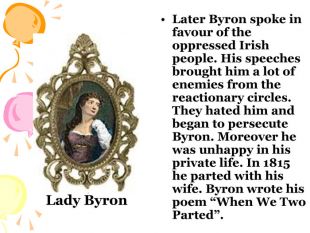Presentation George Gordon Byron
Про матеріал
Presentation George Gordon Byron
This presentation is useful while learning the material about the writers of the English literature.
Перегляд файлу
Зміст слайдів
ppt
Оцінка розробки


Безкоштовний сертифікат
про публікацію авторської розробки
про публікацію авторської розробки
Щоб отримати, додайте розробку
Додати розробку
























